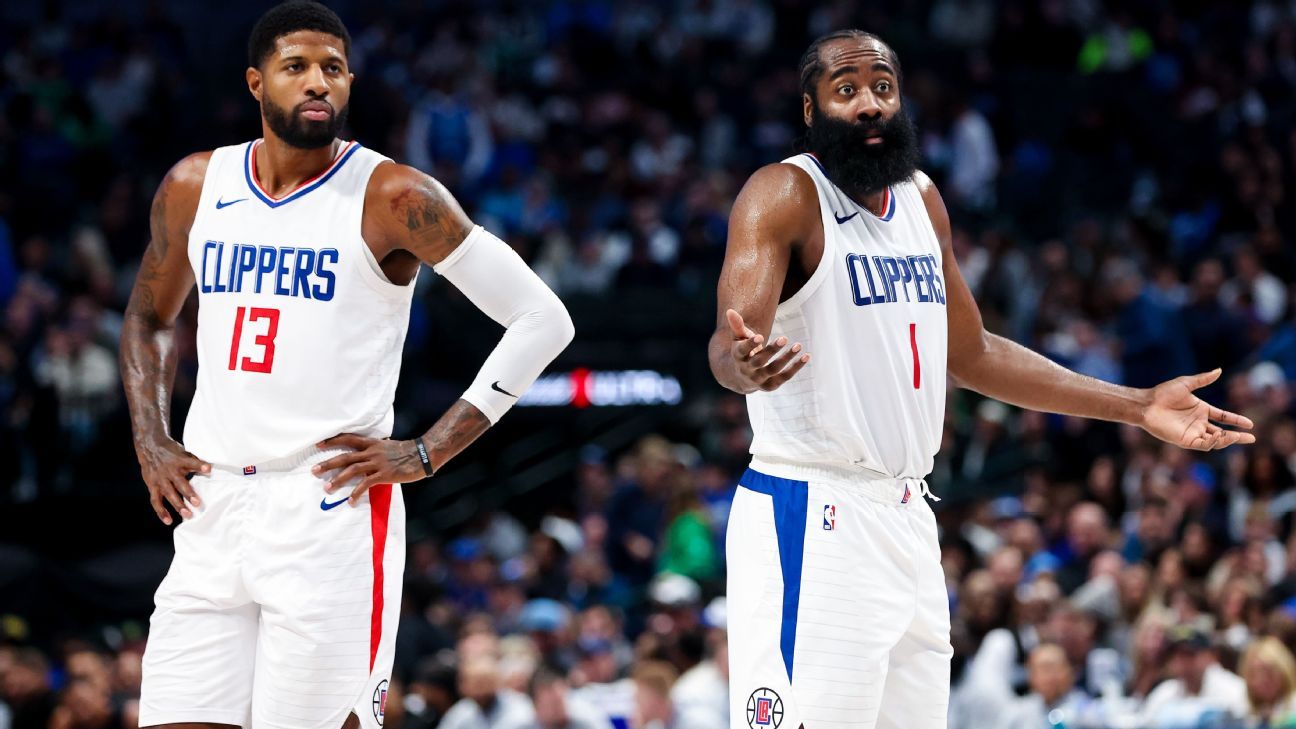It will probably end up being the word of the 2024-25 NBA offseason, barely finishing ahead of “Bronny.”
Admittedly calling what NBA teams are grappling with this summer “the apron” — or more accurately “aprons” since there are two of them — is poor branding. The term doesn’t audibly or visually make much sense to fans. It’s lawyer/accounting terminology.
The bottom line is there is a new set of rules, created nearly 18 months ago when the new collective bargaining agreement was ratified, that are taking effect this summer. These new rules are designed to put clamps on combining player acquisition with heavy spending. You can still do one or the other but it’s now much more complicated to do both.
NBA summertime is when that aim is most relevant.
That’s why there is a new wrinkle that will be entering numerous deals or near deals over the next week: it’s not just how much your team can afford to spend but how much they’re allowed to spend.
Many more trades and signings, even basic ones, now automatically create a hard salary cap that teams cannot exceed under any circumstances, regardless of what Bird rights or exceptions they hold.
The LA Clippers are owned by Steve Ballmer, ranked by Forbes as the ninth-richest person in the world with a net worth of $130.7 billion. Yet they are still in danger of losing star Paul George — not because they won’t write the check to keep their star-laden team together but because paying George market value would send them into apron-induced penalties. Instead, like they did when they got Kawhi Leonard to accept a slight pay cut on the contract extension he signed last season, they’ve been seeking concessions from George to dodge apron penalties.
The New York Knicks made a blockbuster deal to acquire Mikal Bridges the night before the NBA draft but face possibly not being able to re-sign valuable backup Isaiah Hartenstein. Not because they don’t want to pay him but because the Bridges trade triggered a potential “apron” rule that won’t make it possible.
LeBron James, who remains a bargain even at his max salary of just over $50 million per season, is showing an interest in taking a pay cut so the Los Angeles Lakers can sign a better free agent with the midlevel exception. Not because the Lakers have a cap space issue but because they have an apron issue.
The Dallas Mavericks traded three second-round draft picks to offload the salary of Tim Hardaway Jr. last week. Not because they need it to open cap space to sign a free agent but so they can have airspace to operate around the apron.
There will be many more examples like this in the coming days, months and years. And there will be an untold number of transactions that don’t happen because teams will try to avoid all the new roadblocks.
The ESPN trade machine needed a total rewriting of its software. The concept of fans doing anything close to back-of-the-napkin math when figuring out how their team is going to land a star will need an accompanying handbook.
Why has this happened?
The reason NBA owners sought this set of parameters was both aimed at blunting the advantage of deep-pocketed teams and to force redistribution of talent, particularly toward smaller markets. It has taken immediate effect as the league’s elite teams grapple with the fallout and watch players leave for elsewhere with “apron room.”
The push-pull with the salary cap started in the 1980s when a cap was first instituted and has progressed over the decades in the tiny print of collective bargaining agreements.
It significantly contributed to the 1999 lockout. Then there were “max contracts.” The cat-and-mouse game eventually led to a dollar-for-dollar luxury tax. Then a “graduated” luxury tax and a “repeater” tax. Then there was an “apron” and now there’s a “first apron” and a “second apron.”
At its core, all of these mechanisms are designed to harden the salary cap. The current system contains guardrails that are the closest yet to a true hard cap system.
Yet through it all max contracts are being signed now that contain salaries exceeding $60 million per season, the average player salary is more than $12 million and veteran players’ minimum salaries are now more than $3 million. Superstars still often get themselves to their preferred teams and new superteams are created nearly every year.
It might take a few years for everyone to adjust to the new status quo, and it’s going to lead to a lot of unusual changes and some confusion before then. Not everyone who runs NBA teams even fully understands how it all works just yet. The fallout is real but also hard to predict.
Welcome to the apron era.
